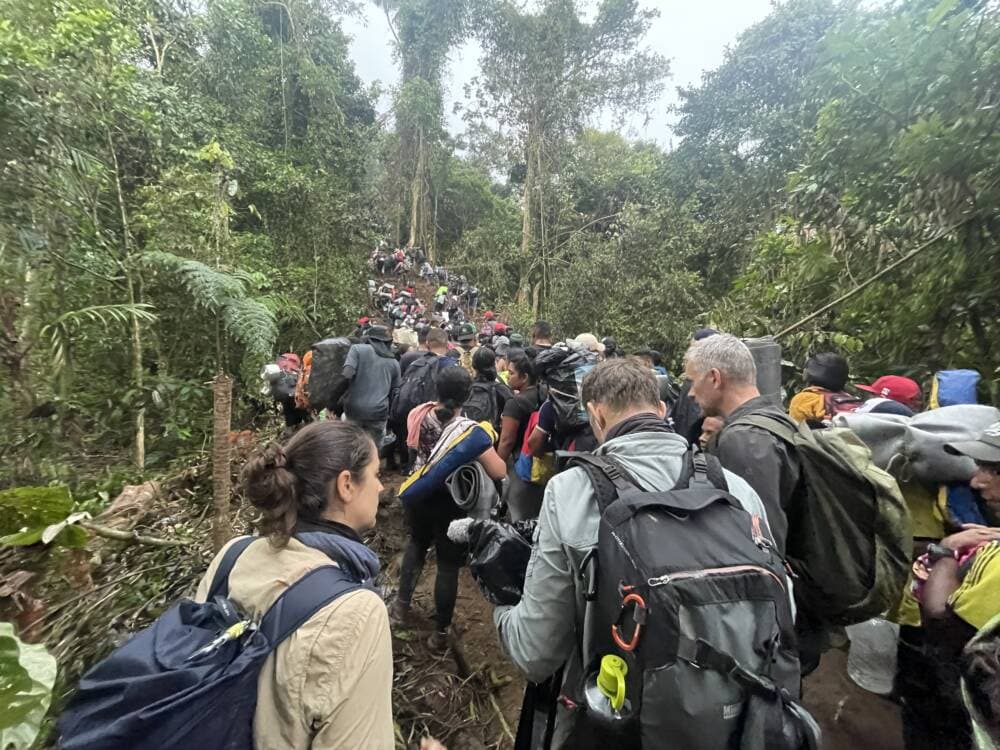Current News on the Darién Gap: A Critical Migration Route
The Darién Gap, a treacherous stretch of jungle between Colombia and Panama, has become a focal point for migration as thousands of individuals attempt to reach the United States and Canada. Recent developments highlight the ongoing challenges and international efforts to manage the increasing flow of migrants through this dangerous terrain.
Recent Agreements and Actions
On July 1, 2024, a significant agreement was signed between the United States and Panama aimed at addressing the migration crisis in the Darién Gap. This agreement seeks to close the Darién Gap to illegal migration, which has seen a dramatic increase in recent years. The 66-mile (106-kilometer) trek through the jungle is notorious for its dangers, including treacherous terrain and the risk of human trafficking. Migrants often face horrific conditions, making this route one of the most perilous in the world.
Key Developments:
- Deportations: As part of the agreement, Panama has begun deporting migrants, including a recent flight that returned 130 Indian migrants to their home country. This action is part of a broader strategy to manage the influx of migrants and enforce immigration laws.
- Record Numbers: The United Nations has reported that over 330,000 migrants have crossed the Darién Gap in 2023 alone, with projections suggesting that this number could rise to 400,000 by the end of the year. This represents a significant increase from the 250,000 migrants estimated to have crossed in 2022.
The Humanitarian Crisis
The Darién Gap is not just a geographical challenge; it represents a humanitarian crisis. Migrants face extreme risks, including violence, exploitation, and severe health hazards. Reports indicate that many migrants are fleeing violence, poverty, and political instability in their home countries, seeking a better life in North America.
Human Rights Concerns:
- The UN Human Rights Office has raised alarms about the horrific human rights abuses faced by migrants in the Darién Gap. Many individuals report being victims of violence, theft, and sexual assault during their journey.
- The Bishop Mark J. Seitz of El Paso, Texas, recently highlighted the suffering of migrants, stating, "You could see the suffering in their faces," emphasizing the urgent need for humanitarian assistance and protection for these vulnerable populations.

Migration Trends and Government Responses
The Darién Gap has become a critical migration crossroads, with hundreds of thousands of refugees attempting to traverse this dangerous route each year. The U.S., Panama, and Colombia have launched various initiatives to curb illegal migration, including a 60-day campaign aimed at halting the flow of migrants through the jungle.
Recent Articles and Reports:
- CNN reported on the dangers of the Darién Gap, emphasizing its role as a crucial passage for migrants heading north.
- AP News highlighted how migrants are now passing through the once-impenetrable jungle more quickly, indicating a shift in migration patterns.
- The New Humanitarian provided a visual representation of the migration crisis through graphs and maps, illustrating the scale of the issue.
The Future of Migration Through the Darién Gap
As international efforts continue to address the migration crisis, the situation in the Darién Gap remains fluid. The combination of government policies, humanitarian needs, and geopolitical factors will shape the future of migration in this region.
Key Considerations:
- Policy Effectiveness: The effectiveness of recent agreements and deportation efforts will be closely monitored. There are concerns that strict measures may not address the root causes of migration, such as violence and poverty.
- Humanitarian Aid: Increased humanitarian aid and support for migrants are essential to alleviate the suffering faced by those traversing the Darién Gap. Organizations and governments must work together to provide safe passage and support for vulnerable populations.

The Darién Gap remains a critical and dangerous route for migrants seeking a better life. As international agreements unfold and governments respond to the crisis, the focus must remain on protecting human rights and addressing the underlying issues driving migration. The world watches closely as the situation evolves, hoping for solutions that prioritize the safety and dignity of all individuals involved.
For more detailed information, you can explore the following articles:





